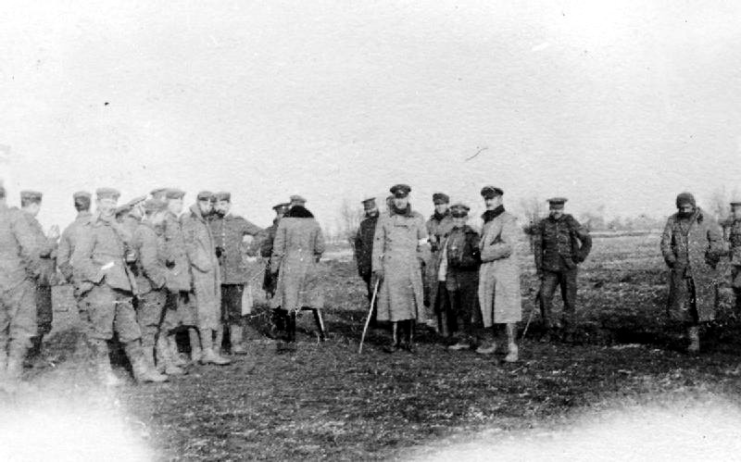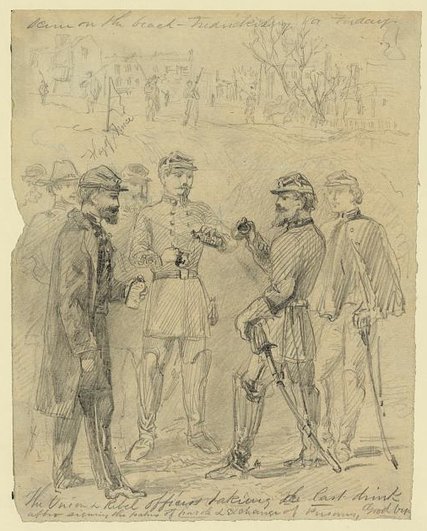Apart from a few exceptions, truces and ceasefires are not normally known to be eventful, with most consisting of either a white flag or the signing of treaties and agreements. But there have been a few times in history where the situation surrounding a cease-fire has been extremely strange, and sometimes even comical.
Here is a list of a few of these occasions, which are arguably the key parts of war; making peace.
Fighting between Turkish and ANZAC troops was halted to quell a Jordanian uprising
This strange truce took place during WWI between the Turks and the ANZACs. The ANZACs were a combined force of Australian and New Zealand soldiers who fought for the British during WWI. Their clash against the Turks spilled over into what is now Jordan, which was under Turkish control at the time.
The battle devastated Turkish forces, prompting them to make a hasty retreat. Seeing their oppressors incapable of fighting back, local Arabs began harassing the retreating Turks.
The situation became desperate, with thousands of Arabs gathering to attack the Turks at the same time as the British. When the British arrived the Turks quickly surrendered, but the angered Arabs wanted to share the spoils. The situation culminated into a full firefight between the surrendered Turkish troops and the Arabs.
A British commander informed the Arab leader that if they continued to attack, he would attack them, finally stopping the rebellion.
British and German airmen shot each other down and teamed up to survive in the wilderness
During WWII the Allies attempted to stop Germany from invading Norway in 1940, which was strategically important to the Nazi war machine effort. In the series of air battles that took place in the skies above Norway, a British two-seat Skua shot down a German Heinkel He 111, which crash-landed in a cold Norwegian forest. Soon after though, the British aircraft crashed too, stranding the two British and three German airmen.
The two groups met and worked together for the greater good. Unfortunately, one of the German crew members was killed in an incident with Norwegian ski patrols. Eventually, the Germans were handed over to the Norwegians who then passed them to the British, spending the rest of the war as POWs. The two British airmen managed to make it to Andelsnes, where they made the trip back to England.
American and German troops share Christmas dinner

It was Christmas of 1944 during the Battle of the Bulge, and three American troops had become lost in the Ardennes Forest. After walking for three days they came across a small cabin in the woods. Knocking on the door, the men were greeted by a German mother, who invited them in for Christmas dinner upon seeing their ragged state.
But while preparing the dinner there was another knock at the door. This time it was four German soldiers, who were also lost and hungry. She informed the Germans that they may come in, but there are Americans inside, and that there will be no shooting. The German corporal replied “It is the Holy Night and there will be no shooting here.”
The men left all of their weapons outside and ate together. The next morning the Germans showed the Americans the best route back to their lines. All men departed, ending the truce.
Union and Confederate soldiers stopped fighting so they could smoke and drink together

During the US Civil War, which took place between April 1861 and May 1865, several unofficial truces occurred. After all, the troops were from the same country. These truces would take place for relatively mundane reasons, like having a smoke, a chat or to trade goods. During a siege at Chattanooga, Tennessee, a truce was called to allow Union forces to retrieve their dead and wounded from the battlefield.
This truce continued on, albeit unofficially, among the Union and Confederate troops watching over each other. They would regularly toss rations and supplies to each other when needed. Commanders were unhappy with these truces and tried to eliminate them, as the soldiers may exchange sensitive information or “soften up” their attitude toward their enemy.
At the end of WWII German and American forces teamed up against the SS

The Battle for Castle Itter deserves to be on this list as it is one of the most famous and remarkable truces. With Hitler dead and the war’s end just three days away, many German soldiers happily dropped their weapons and quit fighting. More fanatical units continued on, however.
Castle Itter was used to hold important political and military French POWs during the war. In fact, one of the POWs in the castle was Charles de Gaulle‘s sister. In the chaos of the final days of the war, the castle was abandoned by its guards, leaving the POWs to fend for themselves. One of the POWs managed to contact Joseph Gangl, a Wehrmacht officer who had sided with the Austrian resistance. Gangl then sought aid from an American unit. Gangl and the small group of American troops, armed with a Sherman tank, made their way to the castle.
The next day between 100 and 150 SS troops attacked the castle but was held off in a desperate stand by the American and German soldiers fighting side by side. Fortunately, reinforcements arrived before the defenders ran out of ammunition.
